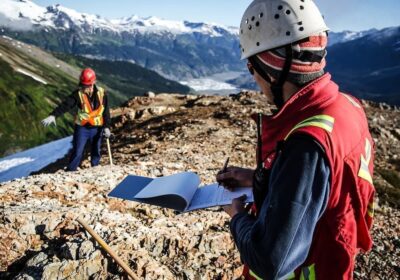
Understanding the Evolution: 8 bit, 16 bit, 32 bit
Within the vast expanse of the digital realm, where each intricate process and captivating visual display emerges from the binary dialect of 0s and 1s, the role of bits stands as a cornerstone of immense importance. From the nascent stages of computational endeavors to the contemporary era characterized by intricate algorithms and immersive multimedia encounters, the progression of bits has been pivotal in sculpting the technological terrain we presently inhabit.
At the core of this progression reside the elemental components of data representation: the 8-bit, 16-bit, and 32-bit architectures. Despite their seemingly simplistic numerical designations, these structures wield a profound influence over various aspects, ranging from computational efficiency to visual richness, and even the very fabric of our digital engagements.
This discourse undertakes a thorough examination of 8-bit, 16-bit, and 32-bit systems, unraveling their significance, applications, and the transformative capacities they possess in molding our digital interactions. From the modest origins of 8-bit microprocessors to the expansive capabilities of 32-bit frameworks, we embark on a voyage through the annals of computing history, delving into the evolution of bits and the profound implications they harbor for the trajectory of technology.
The Power of Bits in Quantitative Seismic Interpretation: Breaking Down 8-bit, 16-bit, and 32-bit Technologies
When delving into the world of quantitative seismic interpretation, understanding the specifications and role of bits is pivotal. Amplitude maps, inversion, and Amplitude Versus Offset (AVO), all have a fundamental relationship with the bit capacity of the technology used.
Bits and Bytes in Seismic Data
In the context of seismic technology, four bytes are employed to store the amplitude values of each seismic sample. Given that a single byte comprises eight bits, this translates to a total of 32 bits attributed to each seismic sample. Hence, the bit-depth is 32. The amplitude values themselves might seem less significant without context, but their importance becomes apparent when evaluating the broader picture.
The Importance of 32 Bits in Field Recording
A 32-bit sample depth is preferred, especially during the field recording stage where each day’s costs can range in the hundreds of thousands. It is this bit-depth that allows every subtlety of the seismic wavefield to be captured. This includes noise, various multiples, reverberations, and hopefully, a substantive signal. There is ample time during the processing phase to segregate and comprehend these nuances.
Distinguishing Between Bit Depth and Resolution
While discussing bit-depth, it’s crucial to clarify that it’s not related to spatial or vertical resolution, a detail that may often be mistaken. To truly comprehend this distinction, consider a pixelated image. These images possess a low resolution and are spatially under-sampled. To illustrate this, envision the same image being presented at two varying resolutions. One measures 300 x 240 pixels, while the other sits at 80 x 64 pixels. Although the latter is reproduced at the same magnitude as the former, it appears more pixelated due to the larger pixel size.
In conclusion, the world of quantitative seismic interpretation requires a deep understanding of bits and their substantial role in recording and interpreting seismic data. From amplitude values to resolution, each step of the process is crucially dependent on bit technology. Also, discover practical techniques for utilizing vectors effectively in this comprehensive guide on how to use vectors to enhance your mathematical prowess.
From Pixels to Perfection: Comprehending the Impact of Bit Depth on Image Quality
In the realm of digital imaging, detail and precision are two key elements that determine image quality. To fully comprehend the correlation between bit depth and image intricacy, one should consider an image rich in detail but lacking in precision.
Consider the following example. The left image is an 8-bit image with a resolution of 300 × 240 pixels. It is devoid of color. Its counterpart on the right holds the same resolution (300 × 240 pixels) but has a bit depth of just two bits per sample compared to the eight in the former.
Upon examination, one would find that the images’ edges are spatially smooth, eschewing the blockiness characteristic of pixelated images. The deficiency lies in the subtlety of pixel values. Despite being spatially smooth, the transition in color space is far from seamless. This lack of finesse can be traced back to its histogram, revealing a mere four values: black, dark grey, light grey, and white. The two bits that represent each pixel have 0 or 1 as potential values, giving only four combinations in total: 00, 01, 10, and 11.
In contrast, higher bit depths offer an increased range of potential values, enhancing the smoothness in color space. A few key points to consider include:
- The reduction in bit depth leads to smaller files. For instance, bringing down the bit depth from 32 to 8 results in using only one byte where there were initially four, implying a 75% reduction in file size;
- Smaller files offer faster load times and require less memory space, optimizing the overall efficiency of your storage space;
- Higher bit depths, while requiring more storage space, provide smoother transitions in color space, ultimately enhancing the image quality.
In essence, weighing the trade-offs between file size and precision is crucial when dealing with digital imaging. While smaller files offer efficiency and speed, the compromise in image quality may not always be justified. Understanding this delicate balance between detail and precision holds the key to perfecting your digital imaging endeavors.
Bits and Beyond: Exploring the Impact of Bit Depth on Seismic Data Analysis
In the domain of seismic data analysis, the bit depth of the data volumes significantly influences the precision of interpretation and analysis. Traditionally, data has been delivered to processors in 32-bit format, a choice made due to prior concerns regarding disk space. However, this practice often leads to the reduction of bit depth in volumes to 8-bit, limiting the amplitude values to 256 discrete sample values.
Where interpretation is concerned, this might suffice. Indeed, many stakeholders in the industry believe the precision offered by 8-bit volumes is sufficient. Consequently, some interpretation tools like Landmark’s GeoProbe volume interpretation tool have been designed to load only 8-bit data.
However, the application of 8-bit data has its limitations, especially when seismic analysis scopes into amplitude mapping, spectral decomposition, or pre-stack work. In these scenarios, the precision offered by 8-bit data might not be adequate.
Debate continues around the optimal bit depth for such analysis, but a common approach involves retaining the original 32-bit volume on disk and creating all derivative volumes and attribute volumes in 16-bit. The reasoning offered is that the range offered by 16-bit volumes—65,536 values—is ample, and any precision beyond this threshold veers into the realm of superfluity due to the inherent noise and other uncertainties in the data.
In a later discussion, the focus will shift to what occurs when the bit depth of data is increased or decreased. This will include an exploration of the potential pitfalls of data clipping, ensuring that seismic data analysts are well-equipped to handle any challenges they might face when manipulating bit depth.
With this understanding, seismic data analysts can leverage the power of bit depth more effectively in their work, increasing the accuracy of their analysis and interpretation for better decision making.
Conclusion
In conclusion, the journey through the evolution of bits, from the humble origins of 8-bit microprocessors to the sophisticated capabilities of 32-bit architectures, reveals a fascinating narrative of technological advancement. The significance of bits in shaping our digital experiences cannot be overstated, as they serve as the fundamental building blocks of data representation. From computational efficiency to graphical fidelity and beyond, the impact of these numerical denominations permeates every facet of our digital interactions. As we continue to push the boundaries of technology, the lessons learned from the evolution of bits will undoubtedly guide us toward a future filled with innovation and possibility.

















